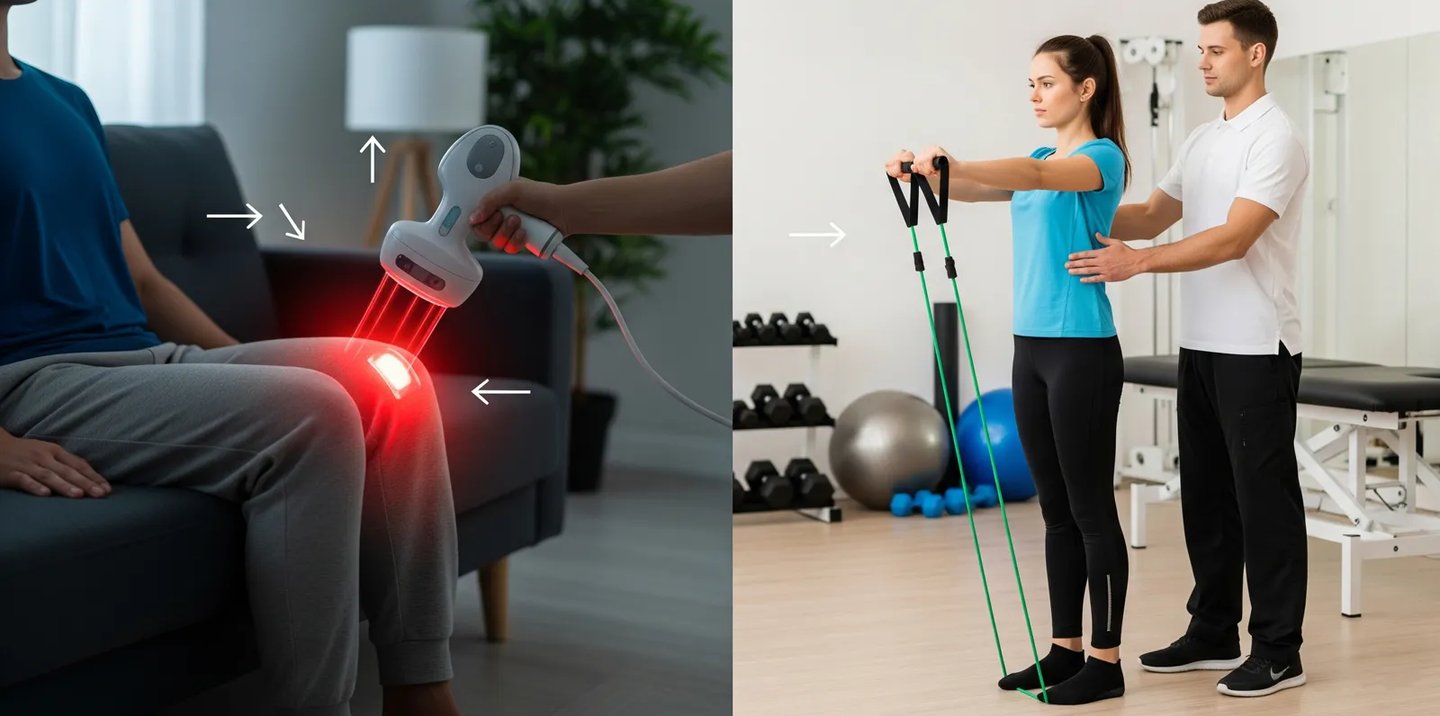Light Therapy vs Traditional Physical Therapy
In modern health management and rehabilitation, Light Therapy and Traditional Physical Therapy are both widely used. Light Therapy uses specific wavelengths of light to stimulate cellular repair and improve circulation, while Traditional Physical Therapy relies on techniques such as massage, heat, and electrotherapy. Both methods have benefits, but Light Therapy is increasingly becoming the preferred choice due to its convenience and long-term effectiveness.
YEEQO
9/18/20251 min read


Key Comparisons Between Light Therapy and Traditional Physical Therapy
1. Mechanism of Action
Light Therapy: Uses red and near-infrared light to penetrate skin and muscle tissue, stimulating mitochondria to produce energy, promoting repair and reducing inflammation.
Traditional Therapy: Improves circulation and relaxes muscles through massage, traction, heat, or electrical stimulation.
2. Convenience
Light Therapy: Easy to use with at-home devices such as LED masks and panels, non-invasive and painless.
Traditional Therapy: Requires visits to clinics or rehab centers, guided by professionals, which can be time-consuming.
3. Safety and Side Effects
Light Therapy: Drug-free, non-invasive, and safe for long-term use with minimal side effects.
Traditional Therapy: Some methods (e.g., electrotherapy, acupuncture, manual therapy) may cause mild discomfort or risks.
4. Applications
Light Therapy: Commonly used for skincare (reducing fine lines, boosting collagen), muscle recovery, pain management, sleep improvement, and mood enhancement.
Traditional Therapy: Better suited for post-surgical recovery, joint injuries, and clinical rehabilitation.
Both Light Therapy and Traditional Physical Therapy have their unique value. For daily wellness and home care, Light Therapy offers a convenient, safe, and effective solution. For serious rehabilitation needs, Traditional Therapy remains essential. In the future, combining the two may provide the most comprehensive health benefits.
